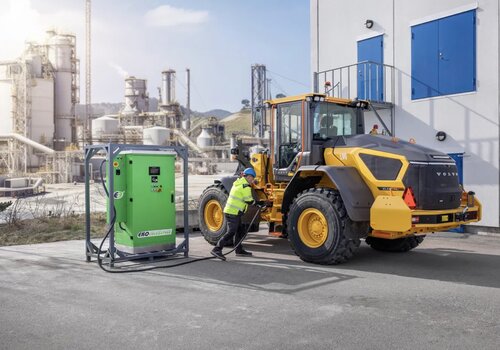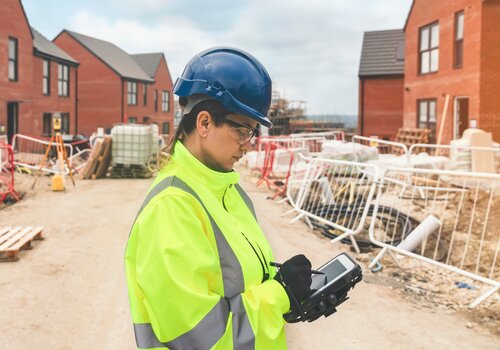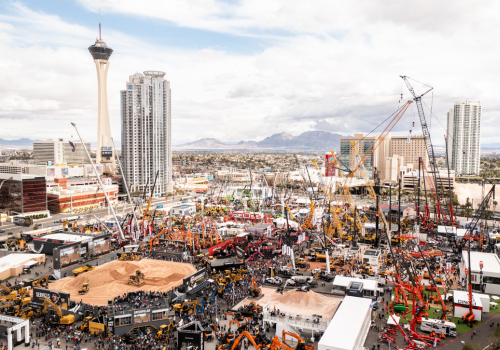Wearable exoskeletons are no longer conceptual—they’re solving real jobsite challenges right now. Designed to augment human strength and reduce physical strain, these devices are seeing growing adoption across job sites thanks to technological advancements and a renewed focus on occupational health and safety.
A recent review found that musculoskeletal pain is most prevalent in the lower back (51.1%), knees (37.2%), and shoulders (30.4%) among construction workers. Passive arm support exoskeletons have been proposed to reduce fatigue during shoulder-intensive tasks.
WHAT ARE WEARABLE EXOSKELETONS?
Wearable exoskeletons are devices worn by workers to support and enhance their physical capabilities. They typically fall into two categories:
- Passive Exoskeletons: These rely on mechanical components like springs and braces to redistribute weight and reduce strain without using electricity.
- Powered Exoskeletons: These are motorized and equipped with sensors to actively assist the user's movements and amplify strength.
From power gloves that enhance grip to back and shoulder supports that ease the load, these wearable tools help reduce fatigue and can prevent injuries. In construction, these suits are useful for overhead tasks, heavy lifting and repetitive motion, all of which can lead to musculoskeletal disorders (MSDs) over time.
REAL-WORLD APPLICATIONS
Over the past few years, construction companies are increasingly adopting wearable exoskeletons to enhance worker safety and reduce physical strain on job sites while also improving overall productivity.
In the United States, Pinnacol Assurance, a workers' compensation insurer in Colorado, has partnered with local companies to pilot exoskeletons among construction workers. These trials aim to assess the effectiveness of wearable support devices in real-world settings, with the goal of reducing injury rates and improving worker well-being. Early results have been promising, suggesting that exoskeletons can play a significant role in enhancing job site safety.
Hilti North America has developed the EXO-O1 wearable exoskeleton in collaboration with Ottobock, targeting tasks involving overhead work. The device is designed to reduce shoulder and neck fatigue, thereby minimizing the risk of injuries associated with repetitive overhead tasks. The EXO-O1 reduces shoulder strain by up to 47% without needing an external power source. Hilti's exoskeletons are part of a broader effort to tackle health, safety and labor shortage challenges on construction sites.
In Canada, Atwill-Morin, a masonry and restoration firm, has integrated exoskeletons into its operations to support workers handling heavy loads. The company reports that these devices can reduce the physical load by up to 70%, significantly decreasing the risk of injury and fatigue among masons and laborers. The exoskeletons are designed for flexibility, allowing workers to deactivate assistance when not needed, thereby enhancing comfort and usability.
SAFETY AND PRODUCTIVITY BENEFITS
The integration of wearable exoskeletons into construction offers a range of benefits:
- Injury Prevention: By reducing the physical strain of demanding tasks, exoskeletons help lower the risk of back, shoulder and joint injuries, particularly those caused by overuse or poor ergonomics.
- Productivity Boost: Workers using exoskeletons often report less fatigue, which translates into more consistent output and fewer breaks throughout the day.
- Workforce Longevity: As the construction workforce ages, exoskeletons can help extend careers by enabling older workers to perform physical tasks safely.
TRAINING AND IMPLEMENTATION NEEDS
To successfully introduce exoskeletons into the field, proper training and integration into the workflow are essential:
- Training Programs: Workers must be trained on how to wear, adjust and operate the equipment properly to avoid misuse or discomfort.
- Fit and Comfort: Units must be sized and fitted to each individual to ensure safety and optimal performance.
- Workflow Analysis: Contractors should assess which tasks are best suited for exoskeleton support and ensure the equipment complements, rather than disrupts, daily operations.
DOWNSIDES AND LIMITATIONS
Despite the benefits, there are still a few important considerations:
- PPE: Any exoskeleton must be able to conform to existing PPE to keep workers safe.
- User Acceptance: Some workers may be reluctant to adopt unfamiliar technology or feel that wearing the suits adds complexity to their tasks.
- Comfort and Mobility: Improperly fitted exoskeletons can cause discomfort, especially during long shifts or in hot climates.
- Maintenance and Downtime: Powered models require regular servicing, and any malfunction could delay work or require a backup plan.
- Cost: The price tag of exoskeletons can be a shock, but some equipment providers and tech developers offer rental or lease programs, allowing contractors to test exoskeletons before purchasing.
Proactive communication, field testing and clear ROI metrics can help address these concerns and build team buy-in.
FINAL THOUGHTS
Wearable exoskeletons are no longer a futuristic concept—they're already reshaping the construction landscape. From preventing injuries to increasing productivity and addressing labor shortages, exoskeletons are positioning themselves as a viable tool for contractors seeking safer, more efficient job sites.
Are you ready to explore how wearable exoskeletons can benefit your job site? Share this article with your team and start the conversation about the future of construction safety and productivity.
Photo credit: SHUTTERSTOCK.COM/FRAME STOCK FOOTAGE












